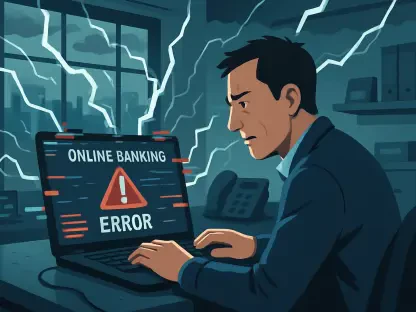The landscape of payments has seen a dramatic transformation over the past ten years. With economies increasingly moving away from physical cash, digital payment methods have emerged as the new norm. This shift has been fueled by advancements in infrastructure, Open Banking, and the proliferation of digital wallets like Apple Pay, Google Pay, Alipay, and PayPal.
The Rise of Digital Wallets
Global Acceptance and Popularity
Digital wallets have achieved substantial global acceptance among retailers and other business platforms. These wallets offer a convenient and secure way to conduct transactions, making them highly favored by consumers. In many markets, digital wallets have become mainstream alternatives to traditional payment methods. The appeal of digital wallets lies in their ease of use and enhanced security features, such as biometric authentication and tokenization, which provide more robust protection against fraud compared to conventional cards.
Consumers are increasingly opting for digital wallets driven by the proliferation of smartphones and the rise of contactless payment technologies. This widespread adoption is evident in regions like Asia, where platforms like Alipay and WeChat Pay dominate the market, handling billions of transactions annually. In the Western markets, Apple Pay and Google Pay have also carved out significant user bases. As digital wallets continue to evolve, their capabilities are extending beyond simple payments to include loyalty programs, ticketing, and even identification, further ingraining them into everyday life.
Card Networks and Infrastructure
Despite the growing popularity of digital wallets, most transactions still utilize existing card networks like Visa and Mastercard. This indicates that while the delivery method has evolved, the foundational card-based infrastructure remains integral to the payments ecosystem. The reliance on these networks ensures a seamless and reliable customer experience. Even as digital wallets rise in prominence, their backend often depends on the established reliability and security of card networks, which can process high volumes of transactions efficiently.
Card networks’ enduring relevance is partly due to their extensive global reach and the trust they have garnered over decades. They offer a level of interoperability that many emerging payment systems have yet to match. Additionally, credit and debit cards linked to digital wallets usually come with fraud protection and benefits like rewards points, which appeal to consumers. This symbiotic relationship between digital wallets and card networks underscores the complexities of transitioning to newer payment infrastructures, despite the shifting front-end technologies.
The Shift to Account-to-Account (A2A) Payments
Understanding Push and Pull Payments
A significant shift is occurring towards Account-to-Account (A2A) payments, which allow direct money transfers between bank accounts without intermediaries. A2A payments are classified into two primary types: push payments, initiated by the account holder, and pull payments, initiated by recipients. Push payments are typically one-time transfers made through online or mobile banking, while pull payments are often used for subscriptions, reducing the risk of errors. The growing interest in A2A payments stems from their potential to simplify complex payment processes and offer lower transaction fees compared to card-based payments.
Push payments, being account-holder-initiated, provide greater control and security, making them ideal for personal and P2P (peer-to-peer) transactions. They also facilitate instant fund transfers, enhancing their appeal for time-sensitive payments. On the other hand, pull payments cater to recurring transactions such as utility bills and subscription services, providing a streamlined method for businesses to collect payments. These payments authorize service providers to draw funds from customers’ accounts automatically, minimizing missed payments and the manual effort involved in tracking invoices.
Projected Growth of A2A Payments
The volume of consumer A2A payments is projected to see substantial growth, from 18 billion transactions in 2024 to 60 billion by 2029—a 209% increase. This growth highlights the benefits of A2A payments over traditional methods, including instant settlements and lower transaction fees. These advantages make A2A payments increasingly appealing to merchants seeking efficient transaction solutions. As businesses and consumers become more familiar with A2A payment systems, their adoption rates are expected to rise sharply, driving further innovation in the sector.
The efficiency of A2A payments is particularly beneficial in B2B (business-to-business) contexts, where high-value transactions are common. The ability to settle payments instantly not only improves cash flow management but also reduces the risk of payment delays and associated financial penalties. Furthermore, the lower transaction fees of A2A payments can lead to significant cost savings for businesses that process large volumes of payments. This financial incentive, combined with the operational efficiencies offered by A2A systems, is poised to accelerate their adoption across various industries.
The Role of Open Banking
Advancements in Open Banking
Open Banking has been a crucial factor in the development of A2A payment solutions. By enabling secure and authorized sharing of financial data, Open Banking has paved the way for innovative payment methods. One notable innovation is Variable Recurring Payments (VRPs), which allow customers to connect authorized payment providers to their bank accounts for recurring payments within set limits. This innovation represents a significant enhancement over traditional direct debits, offering greater flexibility and control over recurring transactions.
Variable Recurring Payments stand out for their ability to provide transparent and customizable payment solutions, which can be especially beneficial in managing subscriptions and other recurring payments. Unlike standard direct debits, VRPs enable consumers to set parameters for their payments, such as maximum limits and frequency, providing a higher level of personal financial management. This control is coupled with real-time notifications and enhanced security features, making VRPs an appealing option for both businesses and consumers.
VRPs and Business Interest
Variable Recurring Payments (VRPs) offer a flexibility and transparency that is superior to traditional direct debits. Businesses and financial institutions are showing increasing interest in VRPs due to their potential to enhance customer satisfaction and streamline payment processes. The transparency and control provided by VRPs make them an attractive option for both consumers and businesses. As VRPs gain traction, they are likely to become a key feature in the suite of services offered by financial institutions, driving further adoption of Open Banking initiatives.
For businesses, the use of VRPs can lead to improved cash flow management and reduced administrative overhead. By automating recurring payments within predefined limits, companies can ensure timely collections while minimizing the need for manual intervention. This can be particularly advantageous for subscription-based services, where consistency and reliability of payments are critical. Additionally, the enhanced transparency offered by VRPs can foster stronger customer relationships, as clients have greater visibility into and control over their payments, leading to increased trust and satisfaction.
A2A Payments in Card-Dominated Regions
New Payment Rails in the United States
The increasing viability of A2A payments can be observed even in regions traditionally dominated by card transactions, such as the United States. The launch of FedNow in 2023, a new payment rail, has introduced significantly lower transaction fees compared to traditional card payments. This initiative represents a considerable opportunity for A2A systems to disrupt the card-dominated market. The introduction of FedNow is expected to catalyze the adoption of A2A payments by offering a cost-effective and efficient alternative to existing card networks.
FedNow’s real-time payment capabilities address a growing demand for instant and reliable payment solutions, making it an attractive option for both consumers and businesses. By reducing transaction fees and settling payments instantly, FedNow offers a competitive edge over traditional card-based transactions. This shift could lead to a gradual migration of users from card payments to A2A systems, driven by the desire for lower costs and enhanced payment speed. The success of FedNow could also inspire similar initiatives in other regions, further expanding the reach of A2A payments globally.
Opportunities for Disruption
The payment landscape has undergone a significant transformation over the last decade. As economies increasingly move away from physical cash, digital payment methods have become the new standard. This shift has been driven by advancements in technology, including improvements in payment infrastructure and the rise of Open Banking, which has enabled greater integration and accessibility of financial services. Additionally, the widespread adoption of digital wallets such as Apple Pay, Google Pay, Alipay, and PayPal has made it easier for consumers to make transactions quickly and securely. These digital wallets provide convenience and efficiency, allowing users to pay for goods and services with just a few taps on their devices. The increase in e-commerce and the need for contactless payments, especially due to the COVID-19 pandemic, have further bolstered the shift toward digital payments. Businesses and consumers alike appreciate the speed, security, and convenience that digital payment methods offer. Overall, the trend toward cashless transactions appears to be a lasting one, fundamentally changing how we conduct financial activities and interact with money.









